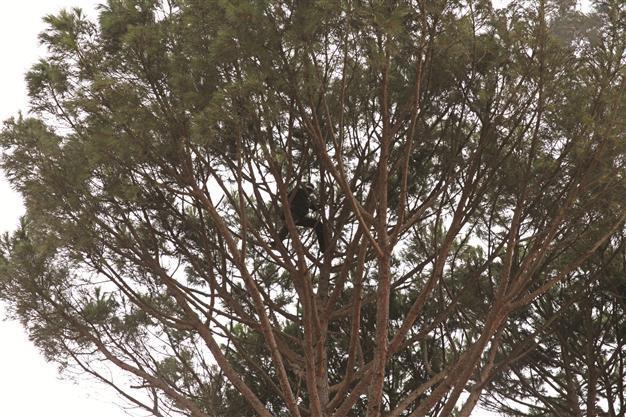Yukarıbey villagers putting in in the study. overtime to process pinecones
Wilco van Herpen YUKARIBEY - Hürriyet Daily News

With a big prong people who collect cones throws them on a band that leads to the machine. The separated nuts are brought to the factory where the shell of the nut is crushed and the pits are separated and washed again.
It was during the early spring when I visited the village of Yukarıbey for the first time in order to see how the villagers collected pinecones. Three month later I returned to the village to see what happened to the pinecones that I had collected together with the men of the village.
I arrived early in the morning, but it already appeared to be the middle of the day in Yukarıbey as most the villagers were working and those who were not hung around in one of the many café’s.
Everywhere I looked I saw piles of cones; in the forest, in front of houses, on top of trailers and in gardens. Wherever I went I saw either machines processing the cones or people separating the pine nuts from the cones by hand.
While walking around on one of the backstreets of Yukarıbey I saw some women sitting together, chatting, drinking tea and opening the cones by hand one by one. The only tool they used was a kind of sickle with which they would hit the cone from its upper side opening the segments of the cone. One by one the pine tree pits fell out of the cone and another woman collected those pits. She put everything in a big pile a couple of meters away from a man who began filling up a huge bucket with water. When the bucket was full he took a small bucket filled with pine tree nuts and poured it in the water. With a sieve he then removed all the floating parts and continued until the whole pile was gone.
Remaining in the bucket with the water were the pits suitable to continue on to the next step of the process where the beautiful pine tree pits are extracted. The trick here is that the bad and often empty nuts float and the good nuts sink to the bottom of the bucket allowing the man to skim off the unsuitable nuts. The man looked worried while he did this job; it was a bad crop this year and the coming year would be bad as well he told me because it takes three years for the cones to ripen. The villagers already knew how the crop next year would be and were hopeful for the harvest they would see two years later. In autumn the villagers can determine if the year’s harvest will be a good one based on the size of the pinecones. If the cones are not a certain size then that year’s and the following year’s harvests will be bad.
Here in Yukarıbey the villagers are lucky because they do not need to solely depend on pine tree nuts for income, they also grow tomatoes. One cone after another was chopped into pieces, the pile of pine tree cones shrank rapidly while the pile of nuts and waste grew. I sat down with the women and began helping them. One of them warned me: “use gloves otherwise your hands will become very dirty and you cannot get rid of the resin on your hands.” Indeed, after helping them for 15 minutes my hands slowly turned black and sticky, but I loved the smell so I did not pay too much attention to it.
Outside the village lie a couple factories that process the pine tree cones. In their yard I see thousands and thousands of cones spread out. In the warm summer sun the cones open up and are then collected and put into a machine that crushes the cones. The machine separates the pits from the rest of the cone, but operating the machine is a hard and dirty job. One young man I see is covered in dust and this is just the outside of his body. I wonder how his lungs are.
With a big prong he throws the cones on a band that leads to the machine. The separated nuts are brought to the factory where the shell of the nut is crushed and the pits are separated and washed again. Then they are dried and brought to another room where a line of women checks the seeds. There are several criteria that they look for including size and quality. Damaged pits all go into different bags. The best (biggest) nuts generally go abroad, while the crushed nuts are used for pastry shops. With enormous speed the women check the seeds, separate them and this work goes on and on. The next time when I buy pine nuts I will thank the people who made it possible for me to buy them, I think. I go back to the village and sit down in the café. The owner of the café serves me a glass of tea and in it is a spoonful of pine tree pits. Across the street is a small shop that sells pine tree pits cooked in special syrup. I try it and know that this is something my daughter will like. I buy a bit for her, get in the car and leave the village.
Turkey,
